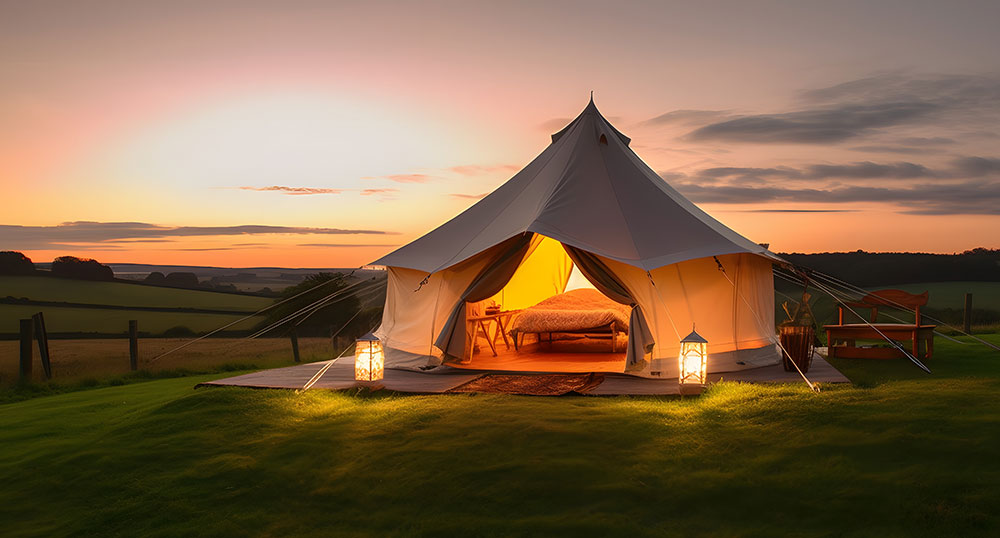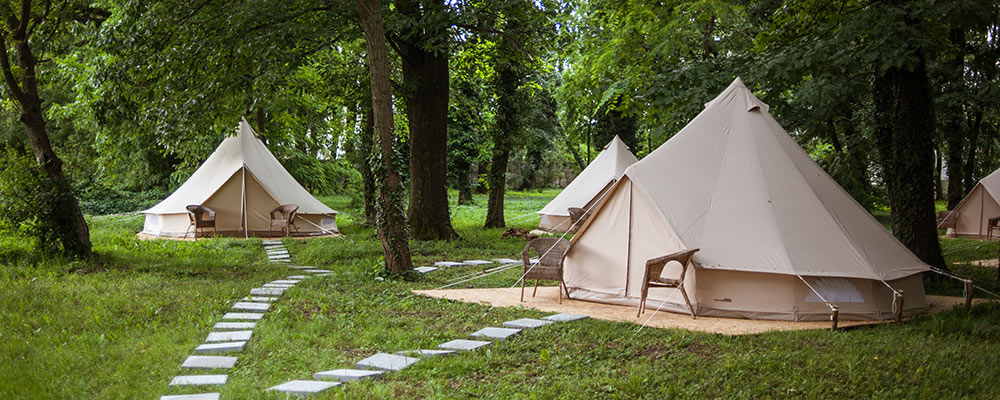- Navigator
- Economic and Fiscal Impact Analysis
- Rural
- Retail, Services, and Accommodations
 Rural America boasts some of the most beautiful landscapes and natural resources in the country and, as a result, has always been a favorite destination for those seeking adventure or wanting to simply get away from the hustle and bustle of city life.
Rural America boasts some of the most beautiful landscapes and natural resources in the country and, as a result, has always been a favorite destination for those seeking adventure or wanting to simply get away from the hustle and bustle of city life.
However, many rural communities in the US face a significant challenge when it comes to offering adequate accommodations to visitors and tourists. The traditional hotel and motel options are often limited or non-existent, leaving visitors with limited options locally.
Glamping, which is short for glamorous camping, combines the beauty of the outdoors with the comfort and amenities of a hotel, making it a promising alternative for rural communities struggling to provide suitable accommodations for their visitors.
Glamping tents and cabins provide the perfect blend of comfort and nature. Travelers can enjoy cozy beds, private bathrooms, and even air conditioning or wood-burning stoves while still being immersed in the natural beauty of the rural landscapes and scenic views.
This combination makes glamping appealing to a wide range of travelers, including adventure seekers, explorers, or those just looking for a romantic getaway. Investing in glamping accommodations can be beneficial for communities with limited hotel/motel options in several ways and the resulting economic boost can help revitalize rural areas.
- Glamping not only attracts tourists but also creates employment opportunities and allows communities to capture tourism dollars that would otherwise be spent elsewhere.
- Local businesses can contribute to the construction and maintenance of glamping sites, while nearby restaurants and attractions benefit from the increased foot traffic.
- Glamping is not limited by seasons and sites can be designed for use in all types of weather. Whether it’s a summer vacation or a winter getaway, glamping accommodations can be a year-round source of revenue for rural communities.
- Each glamping site can be designed to offer a unique experience tailored to the local culture and environment. For example, in a rural vineyard region, glampers can stay in luxury tents surrounded by grapevines, while in a forested area, treehouse accommodations can provide a remarkable experience enjoyed by people of all ages. These unique offerings could help set rural communities apart from more conventional tourist destinations.
 Several rural communities have already embraced glamping with success:
Several rural communities have already embraced glamping with success:
Greene County, VA
Nestled in the picturesque Blue Ridge Mountains of Virginia, this region offers a unique blend of natural beauty and outdoor adventure, making it an ideal location for glamping experiences. From luxury tents in wooded areas to cozy yurts along the Shenandoah River and park, Greene County’s glamping options cater to travelers seeking a closer connection to nature without sacrificing comfort.
Asheville, NC
This picturesque mountain town has seen a surge in glamping sites catering to outdoor enthusiasts and nature lovers. From luxurious treehouses to safari-style tents, glamping has become a staple for those exploring the Appalachian wilderness. By embracing glamping, rural communities can unlock their true tourism potential and offer travelers a memorable, one-of-a-kind experience that can encourage repeat visits.
By embracing glamping, rural communities can unlock their true tourism potential and offer travelers a memorable, one-of-a-kind experience that can encourage repeat visits.
With the global trend toward ecologically responsible and experiential tourism, glamping has the potential to transform rural areas into sought-after destinations for travelers seeking a unique and immersive experience.
Are you considering building a glamping site in your community? Camoin Associates can help you explain the benefits of your proposed project and lay the groundwork for community support using economic, fiscal, and/or visitor impact analyses. Learn more about our Impact Analysis services.




